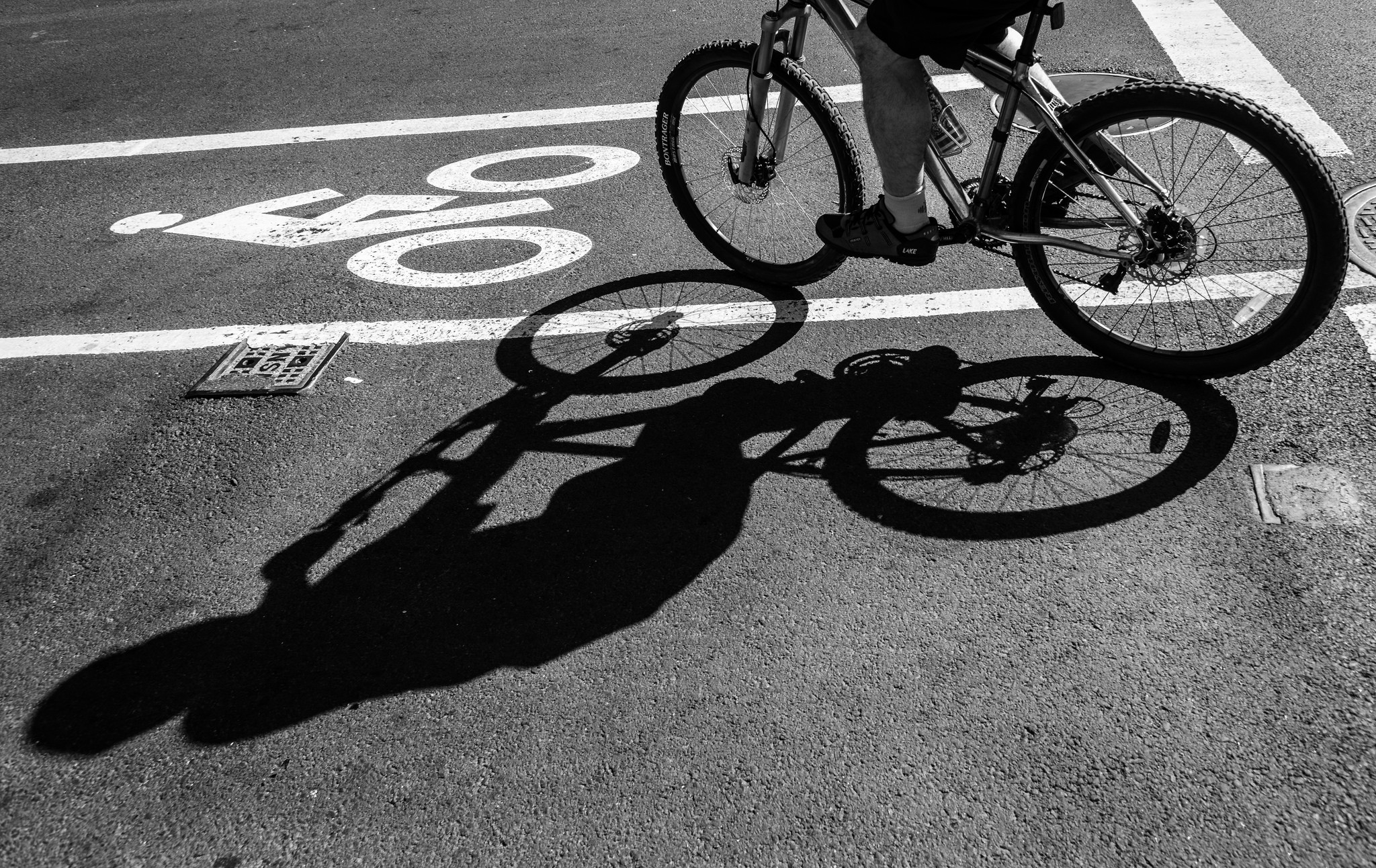
Source: John St John via Flickr Creative Commons
For many, the idea of hopping on a bike and navigating the streets of NYC is prohibitively daunting. However, according to stats from the Department of Transportation, bike ridership in the city is at its highest levels ever, suggesting that many New Yorkers are overcoming their fears and embracing the cyclist way of life. If you’re ready to join the movement, power to you. Before you pedal off into the sunset, be sure to read this guide on how to ride safely in New York City.
Things to Know Before Hopping on a Bike
Biking in New York City is different than biking just about anywhere else. There are advantages and disadvantages, making biking here both easier in some regards and much harder than other cities. Before you take to the streets, you should know what you are getting yourself into.
- It is dangerous. Traffic is intense in New York City and as a biker, you are putting yourself on the front lines.
- It’s not only cars. You are sharing the streets with pedestrians, skateboarders, scooters, strollers and other bikers, too.
- Drivers are not paying attention to you. They just aren’t. So, pay attention to them.
- Be wary. Don’t panic or be timid, but you must be defensive and alert.
- Use protected bike lanes. NYC has an impressive network of bike lanes. Use them.
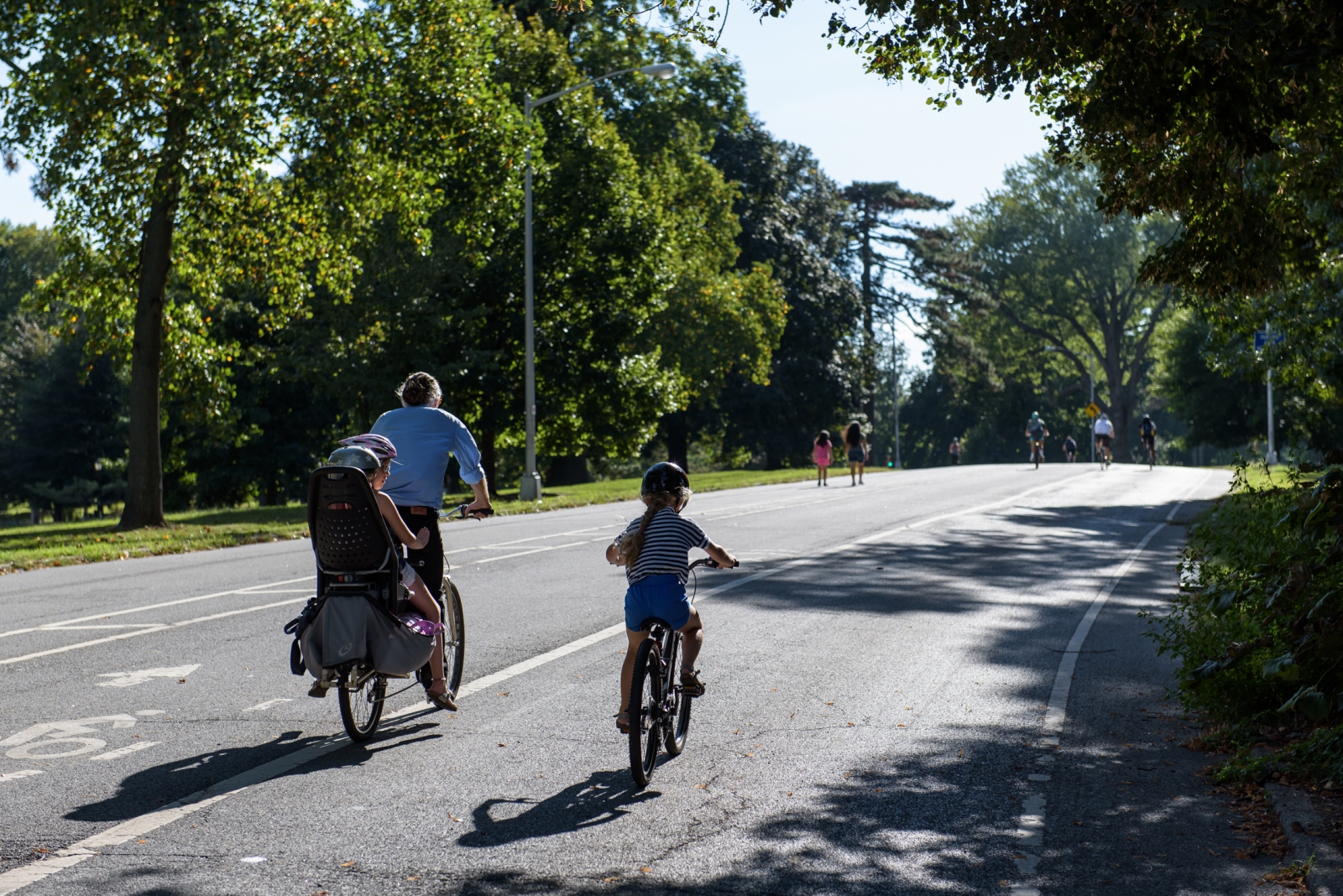
Are You Biking for Fun or Transportation?
How and where you ride your bike will determine your safety level:
- Are you riding for fun, or as a means of transportation?
- Are you riding on familiar streets or to explore new places?
The answers to these basic questions will put you in two general categories – leisure rider versus commuter.
- Leisure riding: If you’re riding for pleasure, focus on biking where it’s fun, easy and relatively stress-free. As chaotic as New York City’s streets are for bikers, there are also plenty of parks and protected greenways that are ideal for leisure riding.
- Commuter riding: If you’re riding to get to work, or it’s your main mode of transportation, that admirable. You’re getting exercise, you’re doing your part to reduce car traffic, you’re seeing the city and the seasons. It’s a great way to get around and you’re likely to be the happier and the healthier for it. But, you must be prepared and proceed with caution – especially if you are commuting over bridges and between boroughs. Get to know NYC’s protected bike lanes.
In the sections below, you’ll find tips for biking in New York City. We will also outline some best practices for commuting via bike as well.
Some Biking Gear is Required
Biking safely in the city requires some basic gear — some of which is required by law. So before you venture out, take stock of what you have. Here’s a list of what you need:
- Helmet — Required for kids under 14, but it’s just a smart thing to wear.
- Bike lights (required) — White for the front of your bike, red for the rear.
- Bell (required) — Whether it’s a bell or some other audible device, you will need it.
- Bike lock — Ideally, a tough, sturdy U-shaped lock that is theft-proof.
A helmet is obvious. Don’t ride without one – helmet-head be damned. Bike lights are expensive but are required by law and a bell is required, too. Bells are especially helpful in alerting other bikers and pedestrians of your presence – unless you want to go hoarse yelling, “On your right!” “On your left!” And, “Hey — watch it, lady!!”
- Reflective clothing. You may notice some riders wear reflective vests or other reflective apparel. While these precautionary measures are admirable, they offer little value unless you are planning on riding at night. In most cases, a strong, flashing white light attached to the back of your bike is especially effective.
- Mirrors. Some riders also affix rear-view mirrors to their handlebars or to their helmet. Again, these devices are unnecessary for the average cyclist. Your best habit is to always check over your shoulder before shifting lanes or turning. While rear-view mirrors may assist you in doing that, they should not replace the habit of looking over your shoulder.
In all honesty, to bike in New York City, you don’t even need to own a bike to get around. With the prevalence of Citi Bike docks and the relative affordability of annual membership ($163/year), you could rely solely on bike sharing and skip buying a bike altogether. The only thing you should have is a helmet.
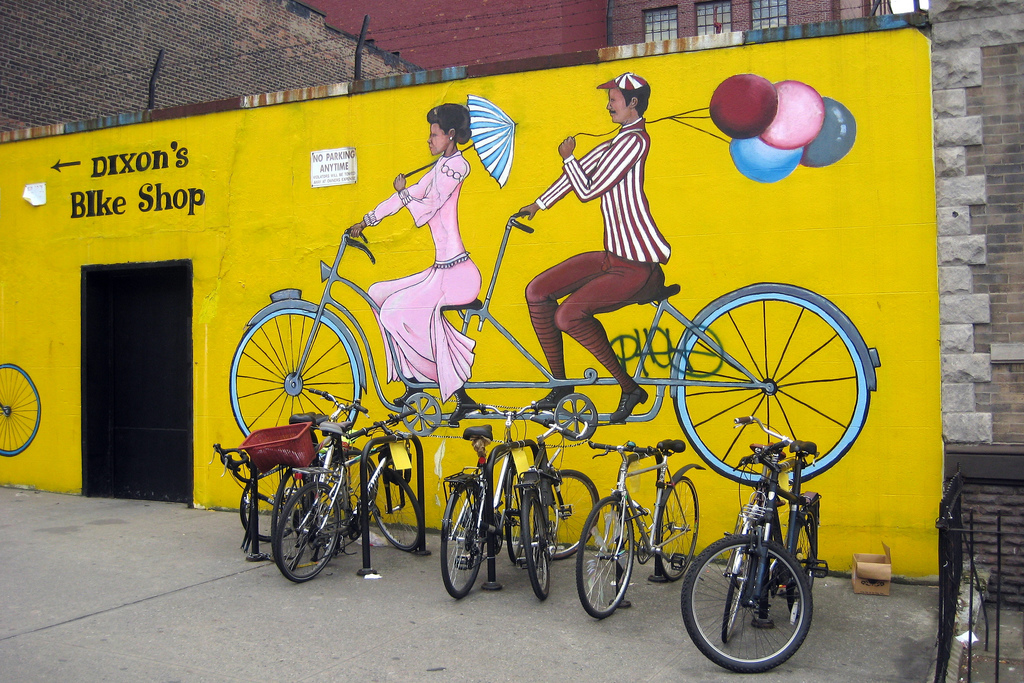
Source: Wally Gobetz via Flickr Creative Commons
Do a Test Run
If your bike-riding skills are a little rusty, take it slow. It’s wise to do a test run, practicing braking, shifting gears and maneuvering intersections before you set out for the streets. Parks, protected greenways and wide, low-traffic streets are ideal places to get some practice. Regardless of where you go, avoid peak hours. Especially avoid practicing in Central Park on a Saturday, which can be as bad as navigating car traffic.
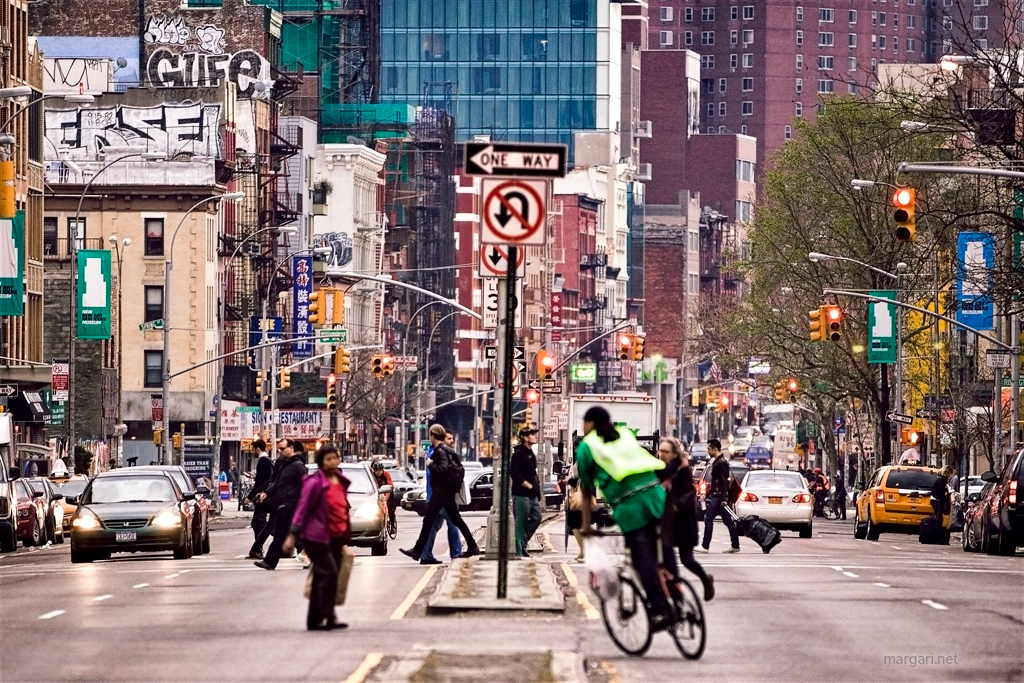
Source: Paulo Margari via Flickr Creative Commons
Cyclists Need to Follow Car Rules
As a cyclist, you must follow the rules of traffic just as a car would. That means you must:
- Stop at red lights
- Follow the follow street traffic
- Turn from the designated lane
- Yield to pedestrians and not block the box
- Bike on the streets, not the sidewalks
You are essentially allowed to bike wherever a car can go except tunnels (most bridges have separate bike lanes). Even though bikers are not forced to ride in bike lanes, it’s really the safest and most enjoyable way to ride. If possible, find routes that have solid bike lanes even if traveling these routes is less direct. Or choose a familiar low-traffic area and have a set route in mind before you head out.
Also, all bike lanes are not created equal. The safest are physically protected paths which have a structural barrier separating car traffic and bike traffic. The least safe bike lanes are referred to as “sharrows,” which are simply car lanes with bicycle markings on the pavement to indicate a shared lane for cars and bikes. In general, the lanes demarcated with green paint are safe bets. For more detail on the different types of bike lanes found throughout New York City, refer to this handy primer.
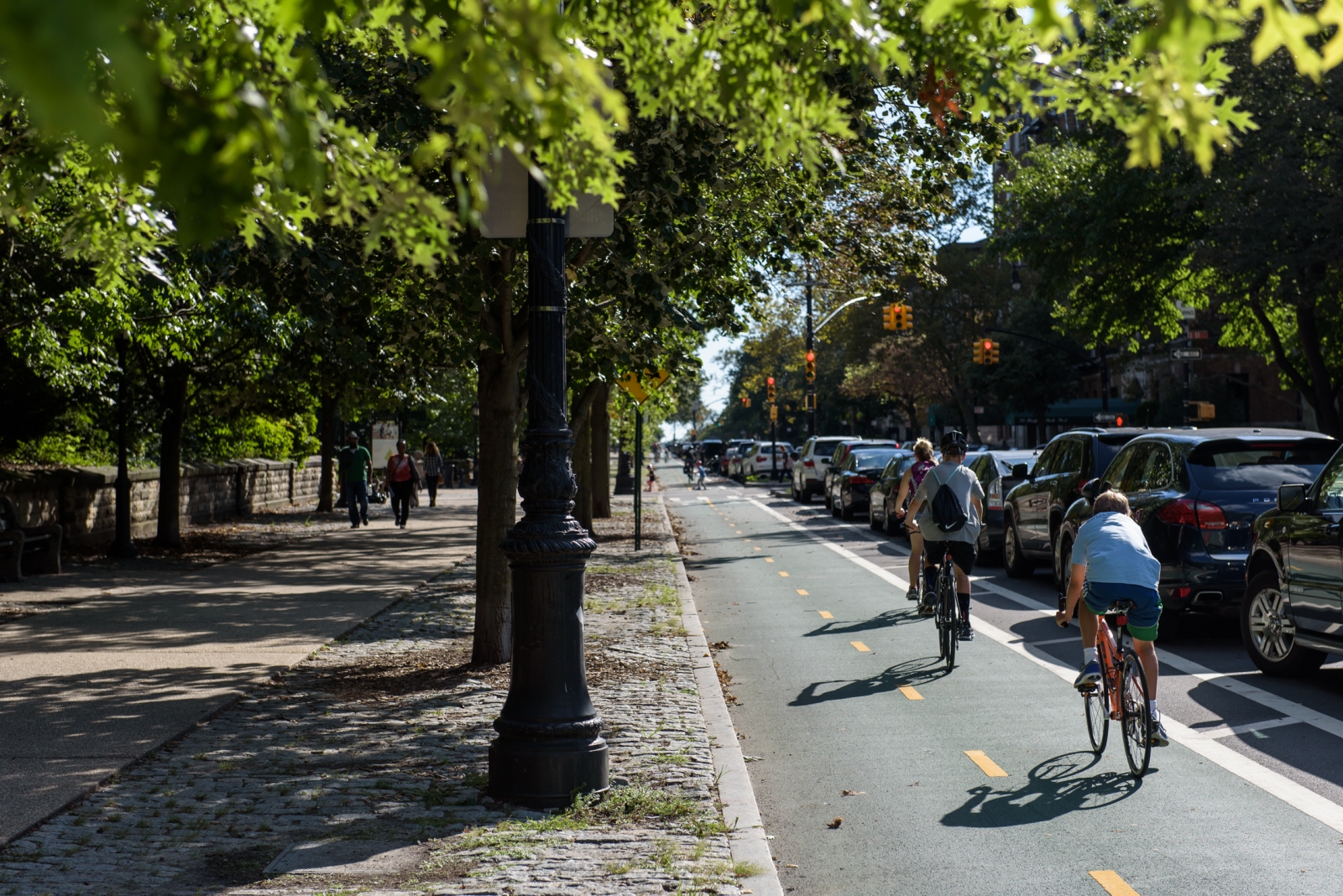
Find a Friend to Show You the Ropes
When first navigating the streets, it can be incredibly helpful to have a guide who knows the lay of the land and can show you the ropes. Perhaps a trustworthy and patient friend who happens to be a seasoned NYC biker. Having someone give you tips on streets to avoid, streets to use and how to navigate intersections and bridges will make your first couple of rides much less stressful. This is particularly helpful if you are planning to bike long distances, into Manhattan or other highly trafficked areas.
Tips for Intersections and Turns
Making a turn on a bike is where things get really tricky — especially multi-lane roads with oncoming traffic. As a general rule of thumb, bikers should think of themselves as cars in these scenarios. That means following traffic lights, using hand signals (as opposed to blinkers!) and using the appropriate turn lanes.
- Intersections. Let’s face it: Intersections are trouble spots. Position yourself in line with the turning cars ahead and behind you. Don’t swing wide from the outside to get ahead of them. Wait your turn. Once you’re at the front of the line and about to make your turn, check oncoming traffic before proceeding. Do not go simply because the car ahead of you has gone. You are less visible than a car, so never assume oncoming traffic will see you. And, from personal experience, this a bad move. I followed the car ahead of me turning across Delancey Street and got hit by an oncoming taxi. Obviously, I survived, but the experience taught me to ride defensively and to never assume I was clearly visible.
- Cars turning in front of you. You should be particularly wary of drivers making right or left-hand turns directly in front of you. This is where cyclists and even pedestrians are apt to get clipped. That’s because it’s a blind spot for motorists — especially big trucks.
- Getting doored. Riding alongside parked cars is also a major hazard. It is nearly impossible to predict when a door will open, but there some tips:
- Be aware of your bike’s distance to parked cars. Are you far enough away if a door opens?
- Watch for cars in which you can visibly see someone sitting inside
- Watch for cars with their parking lights on or their brake lights on
- Watch for suddenly stopped cars or cars that are backing up
- If you see a car door opening in front of you, slow down as quickly as possible. Do not swing out to avoid it in case there is oncoming traffic behind you. If you must, hitting the door is better than swerving out into oncoming traffic.
General Advice and Etiquette for Biking in NYC
- Be wary of potholes, ruts in the road, gravel and manhole covers (especially in the rain!)
- Keep your head on a swivel.
- Be particularly wary of cabs and T6 plates, which tend to pull over suddenly and stop at random to pick up and let off passengers.
- When biking at night, proceed with extreme caution. Cars cannot see you and your reflective lights can only do so much.
- Yield to pedestrians – even those terrible, texting jaywalkers! Do not weave through the crosswalk to get around them.
- Do not bring your bike on the subway. There is no law prohibiting this but it’s a jerk-move and you are essentially making two efficient forms of transportation inefficient.
- If you are planning to drink more than a beer or two, leave your bike at home. It is extremely foolish to bike drunk.
- When passing, especially when speeding downhill, on a bridge for example, inform the person ahead of you that you are coming. Yell a simple “On your left!” Or, ring your bell to alert the slower rider ahead of you.
- When riding in a group, ride single file. Especially on busy or narrow streets.
- Do not talk on your phone, listen to music or text when you bike. You need your wits about you at all times, folks!
Related:










